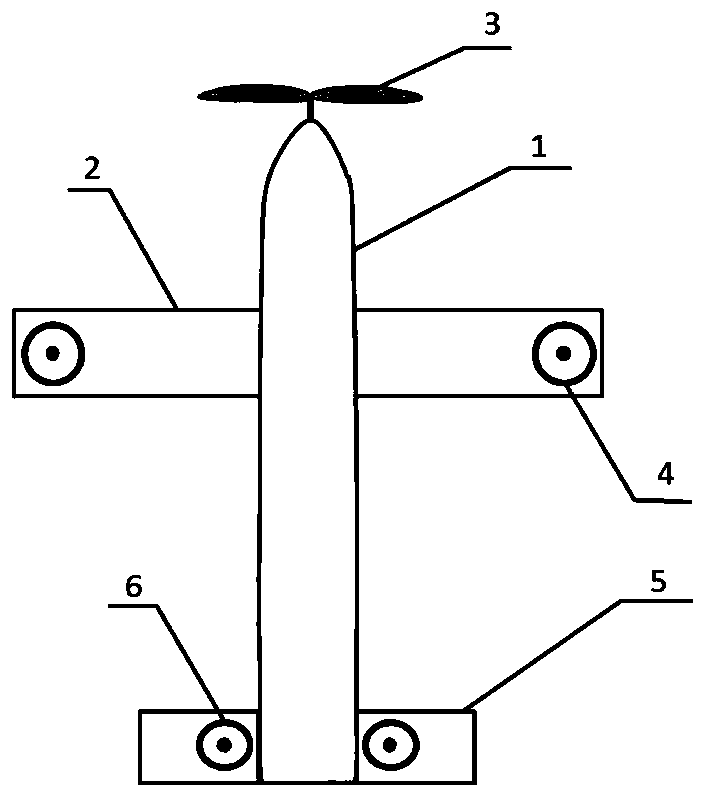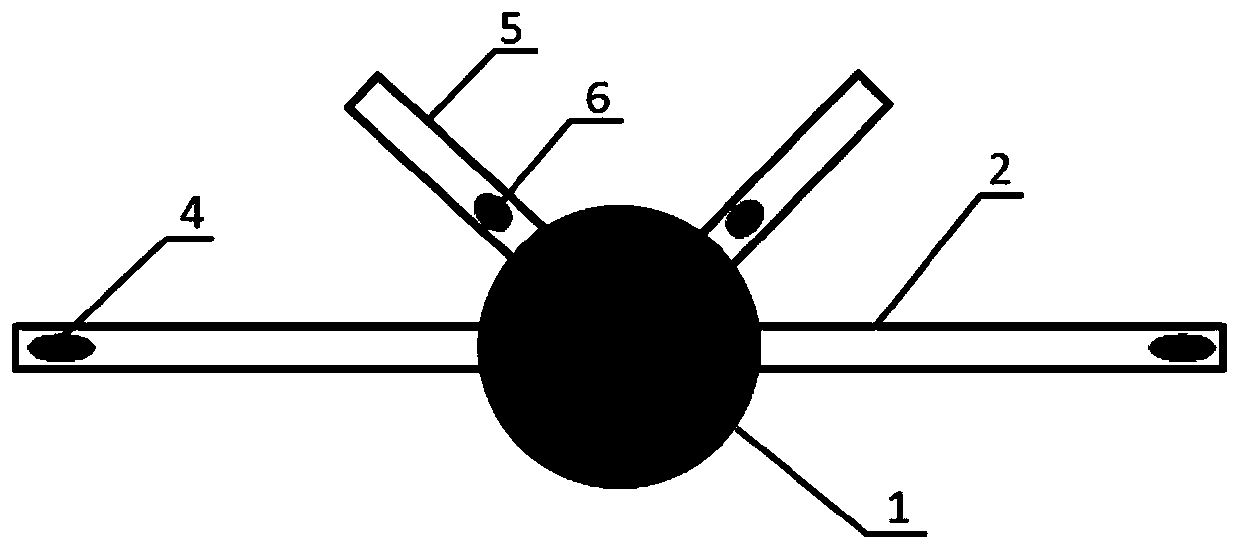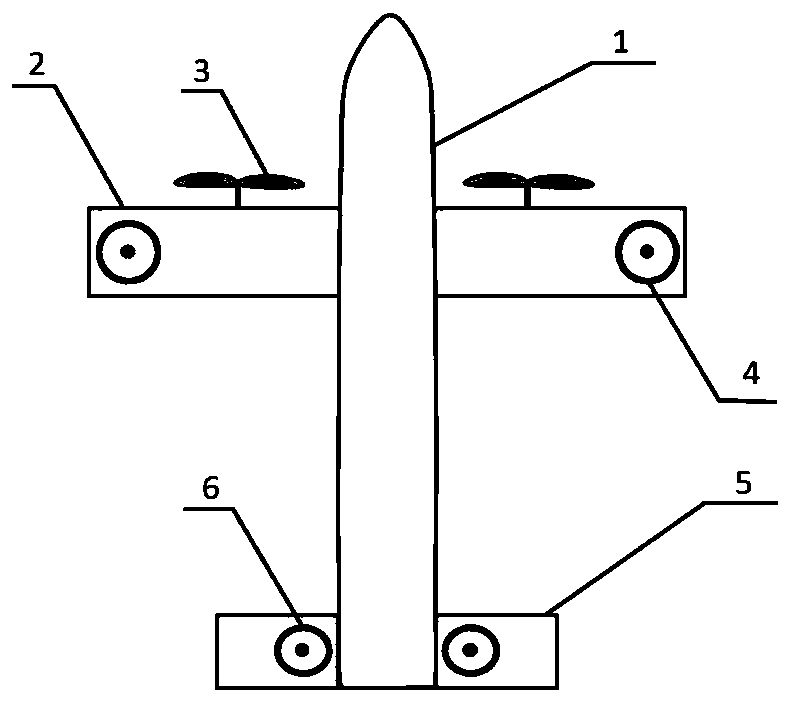Aircraft with V-shaped tail wing and multi-rotor vertical take-off and landing layout
A vertical take-off and landing, multi-rotor technology, applied in the field of aircraft, can solve the problems of high flight resistance, difficult take-off and landing, weak wind resistance, etc., to achieve the effect of enhancing wind resistance, improving wind resistance, and small windward area
- Summary
- Abstract
- Description
- Claims
- Application Information
AI Technical Summary
Problems solved by technology
Method used
Image
Examples
Embodiment 1
[0027] see figure 1 and figure 2 , an aircraft with a V-tail multi-rotor vertical take-off and landing layout, including a fuselage 1, a fixed wing 2, a V-shaped tail 5 and a power mechanism that provides the forward pulling force of the aircraft. The fixed wings 2 on both sides are symmetrically arranged near the tip The tip rotor 4, the rotation plane of the wing tip rotor 4 is located in the same plane as the fixed wing 2; the V-tail rotor 6 is symmetrically arranged in the two wing sections of the V-shaped tail 5, and the rotation planes of the two V-tail rotors 6 are in the same plane as The 5 wing sections of the V-shaped tail are located in the same plane.
[0028] In this embodiment, the vertical take-off and landing aircraft formed by the wingtip rotor 4 of the two fixed flanks 2 wingtips plus the V-tail rotor 6 of the V-tail 5 can significantly reduce the size of the aircraft by the arrangement of its hovering power or attitude assistance. resistance; in the case ...
Embodiment 2
[0031] see image 3 , Figure 4 or Figure 5 , an aircraft with a V-tail multi-rotor vertical take-off and landing layout, including a fuselage 1, a fixed wing 2, a V-shaped tail 5 and a power mechanism that provides the forward pulling force of the aircraft. The fixed wings 2 on both sides are symmetrically arranged near the tip The tip rotor 4, the rotation plane of the wing tip rotor 4 is located in the same plane as the fixed wing 2; the V-tail rotor 6 is symmetrically arranged in the two wing sections of the V-shaped tail 5, and the rotation planes of the two V-tail rotors 6 are in the same plane as The 5 wing sections of the V-shaped tail are located in the same plane.
[0032] The aircraft adopts the vertical layout of the fixed side wings 2 wingtip rotors 4 and the V-tail rotor 6 of the V-shaped tail 5. The structure of the aircraft is simple and there is no blade interference problem of front-pull and rear-pull force, and it is compatible with a variety of Power la...
Embodiment 3
[0036] see Figure 6 , an aircraft with a V-tail multi-rotor vertical take-off and landing layout, including a fuselage 1, a fixed wing 2, a V-shaped tail 5 and a power mechanism that provides the forward pulling force of the aircraft. The fixed wings 2 on both sides are symmetrically arranged near the tip The tip rotor 4, the rotation plane of the wing tip rotor 4 is located in the same plane as the fixed wing 2; the V-tail rotor 6 is symmetrically arranged in the two wing sections of the V-shaped tail 5, and the rotation planes of the two V-tail rotors 6 are in the same plane as The 5 wing sections of the V-shaped tail are located in the same plane.
[0037] In the present embodiment, the two tip rotors 4 are two tilting rotors, and the two tilting rotors are respectively symmetrically arranged on the outer positions of the tips of the two fixed side wings 2 to form a tilting rotor aircraft, and the tilting rotor aircraft It is a set of rotor tilting system components that ...
PUM
 Login to View More
Login to View More Abstract
Description
Claims
Application Information
 Login to View More
Login to View More - R&D
- Intellectual Property
- Life Sciences
- Materials
- Tech Scout
- Unparalleled Data Quality
- Higher Quality Content
- 60% Fewer Hallucinations
Browse by: Latest US Patents, China's latest patents, Technical Efficacy Thesaurus, Application Domain, Technology Topic, Popular Technical Reports.
© 2025 PatSnap. All rights reserved.Legal|Privacy policy|Modern Slavery Act Transparency Statement|Sitemap|About US| Contact US: help@patsnap.com



